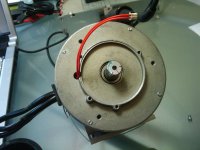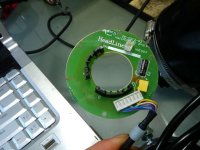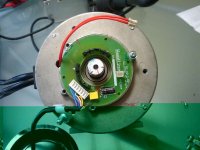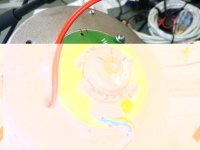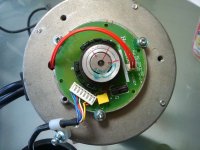That makes sense. If the harmonic content due to PWM goes up,
then efficiency could drop a little due to destructive interference?
What do we do with the idea of third harmonic current injection?
How would you go about pulling that off with a PWM controller?
Increase the duty cycle of the PWM signal (i.e. inject more current) modulated by the third
harmonic. Harmonic of what exactly? phase switching frequency? so, how
would you derive this signal. 3 x frequency in a micro?
I have to go back and reread that paper. :?
Ramble warning:
First of all, would just doing 6 phase control would be enough to start.
You guys with the dual motor setups are already running what I'd call a variant of a 6 phase drive.
You could probably phase them so that you get the 30 degree phase locked with timing chain/pulley
and drive it with a six phase drive. But you guys are running independent controllers right?
At first I thought that the controllers would be asynchronous in frequency, but
the motors are locked mechanically, therefore, in phase with each other with some random orientation.
The controllers are dependent on the frequency of the motors right? so the controllers should be locked
at the same mechanical frequency and resulting electrical frequency? But the phase difference is unknown.....
unless you guys are phasing the motors together like a overhead valve train on an ICE.
Ok, so why not split the stator (HXT 80-100, 12 pole -> 2 - 6 pole three phase) and run two controllers, one
per 6 pole three phase set.
The paper says the phase difference between the two "split-phase stators" is 30 degrees....That's the adjacent set
of windings (12 x 30 = 360) If my thinking isn't completely crazy, then it'll act like two independent motors right there in one stator just like you're running already with two motors in parallel!!!!!! that is crazy!!!!

Now, you might get harmonic distortion and have it screw up the controllers or some effect on the feedback.
But I"m hoping for a loss in efficiency at most. :|
Maybe that is the whole point of this third harmonic injection craziness, etc..etc...etc...
But, hell, I'm gonna go order some more controllers!!!!!

This might help solve controller problems as well..
If you run 2 parallel 3 phase sets of windings at 80 amps per split....that's 160 amps total draw from batteries. YIkes.
Then off the shelf turnigy @ $100 dollars per split phase for $200 per motor would push 160 amp at 60-80% capacity for
reliability.
Ok, now, how do you wire it up? Do you run adjacent phases hot at the same time, or stagger them..
(end rant)
Hell, if this works, I'm changing my name from 12p3phPMDC to 2-6p3phPMDC!


